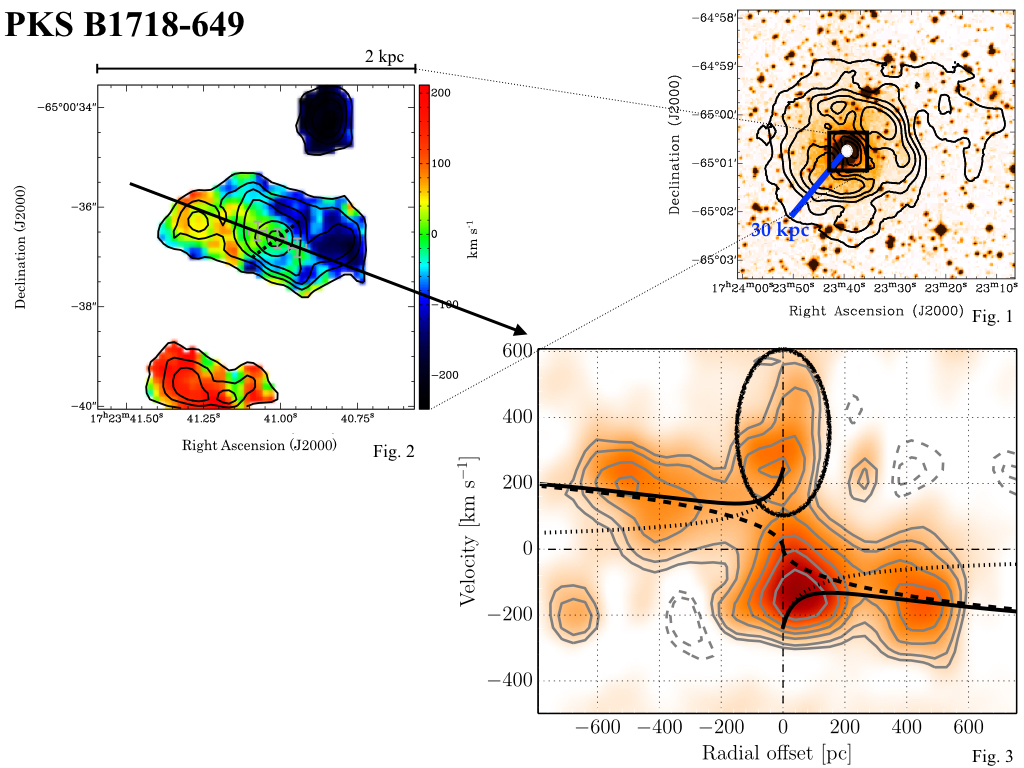Daily Image
29-03-2016Feeding a newly born radio source
| Submitter: | Filippo Maccagni |
| Description: | As radio-astronomers when we study active black holes we have the great advantage to have ways to determine their age. The more complicated way is to follow the expansion of the radio lobes, derive their speed and how long it took to cover the distance from the nucleus. The much easier (but less accurate) way is to use the shape of the radio spectrum combined with the size of the radio source. Among nearby radio sources, the radio galaxy PKS B1718-649 is estimated to be only 100 yr old: a baby radio source! These young radio sources need to be fed to grow to the tenths of kpc scale of the largest radio sources in the sky (e.g. Centaurus A, Cygnus A). Gas falling into the central black hole of a galaxy is considered the food of an active nucleus, which converts it into energy and re-emits it into the interstellar medium. This phenomenon is believed to have a strong impact in the evolution of the entire galaxy and of its environment. A few years ago, we observed the atomic neutral hydrogen (HI) of PKS B1718-649 (Fig 1.; Daily Image 10-09-2014 ) using the Australian Telescope Compact Array. Against the very compact radio core (only 2 pc in radius), we discovered, in absorption, two clouds of HI which could be contributing in feeding the radio source. However, the observations of the HI alone were not able to confirm if the cold gas is fuelling the central supermassive black hole. Hence, we used SINFONI at the VLT to trace warmer gas, i.e. molecular hydrogen (H2) at 2.12 micrometers, in the innermost 2 kpc of PKS B1718-649. As shown in Fig. 2, the H2 is distributed in a double-disk structure, where both disks are rotating. The inner disk (r < 600 pc), oriented in the East-West direction, seems to be a circum-nuclear reservoir of fuel for the central radio source. Along its major axis, in the central 75 pc (Fig. 3), we detect H2 with red-shifted velocities with respect to the rotation of the disk. This strongly suggests that not only the HI but also the H2 is actively contributing to feed this newly born radio source. The direct detection of cold gas accreting into a young radio source is not common. Follow-up high resolution observations of the colder component of the molecular hydrogen will allow us to further understand the fuelling of this young radio AGN. These results have been presented by F. M. Maccagni, F. Santoro, R. Morganti, T. A. Oosterloo, J. B. R. Oonk, and B. H. C. Emonts in a recently published A&A paper: arXiv:1602.00701 |
| Copyright: | ASTRON |
| Tweet |  |
